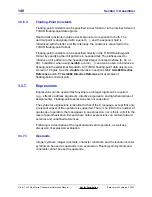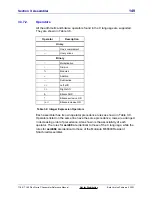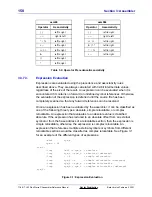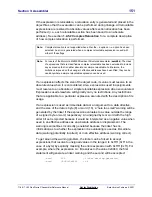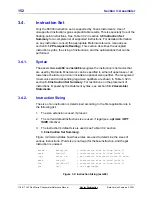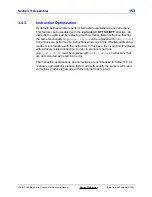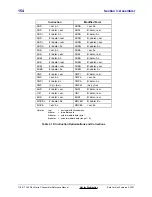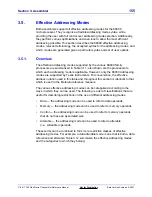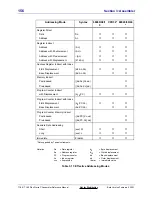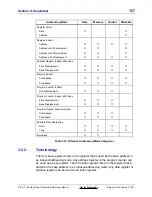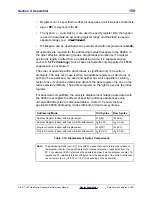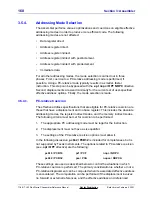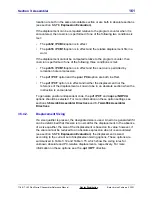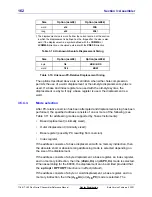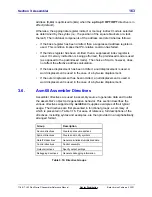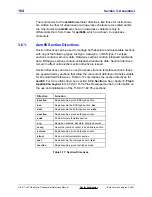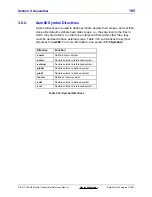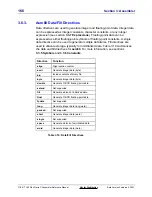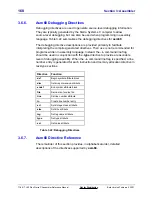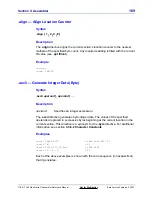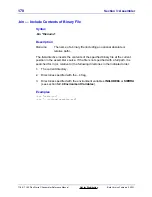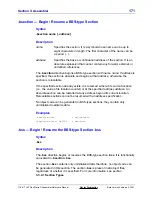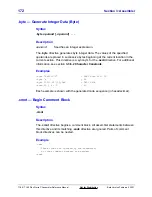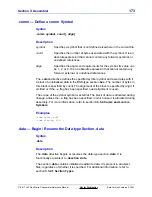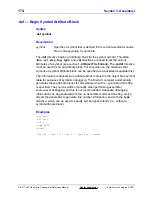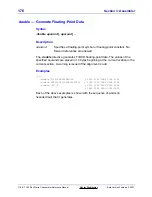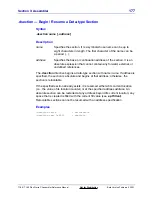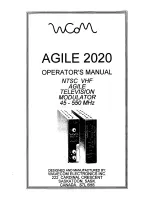
162
Section 3: Assembler
TI
-
89 / TI
-
92 Plus Sierra C Assembler Reference Manual
Not for Distribution
Beta Version February 2, 2001
Size
Option (asm68)
Option (asm68k)
word
a16
FRS
long
a32
FRL†
† The displacement size is word if either the current section or the section
in which the displacement is defined has the .S qualifier; the size is also
word if the displacement is a symbol defined with the COMM.S or
LCOMM.S directive, or declared external with the XREF.S directive.
Table 3.14: Unknown Absolute Displacement Sizing
Size
Option (asm68)
Option (asm68k)
byte
fr8
BRB / BRS
word
fr16
BRW
Table 3.15: Unknown PC-Relative Displacement Sizing
The options described above are overridden when either hole compression
permits the use of a word displacement or the old-style displacement syntax is
used. If a base and index register are used with the old-style syntax, the
displacement is a byte; if only a base register is used, the displacement is a
word.
3.5.4.3. Mode
selection
After PC-relative coercion has been attempted and displacement sizing has been
performed, the specified address consists of one or more of the following (see
Table 3.11 for addressing modes supported by Texas Instruments):
•
Base displacement (minimally sized).
•
Outer displacement (minimally sized).
•
Base register (possibly PC resulting from coercion).
•
Index register.
If the address consists of a base displacement with no memory indirection, then
the absolute short or absolute long addressing mode is selected depending on
the size of the displacement.
If the address consists of a byte displacement, a base register, an index register,
and no memory indirection, then the (d8,An,Xn) or (d8,PC,Xn) mode is selected.
When assembling for the 68000, the displacement can be omitted provided that
the .opt iopt / OPT IOPT directive is in effect (default).
If the address consists of a byte or word displacement, a base register, and no
memory indirection, then the (d16,An) or (d16,PC) mode is selected. The

